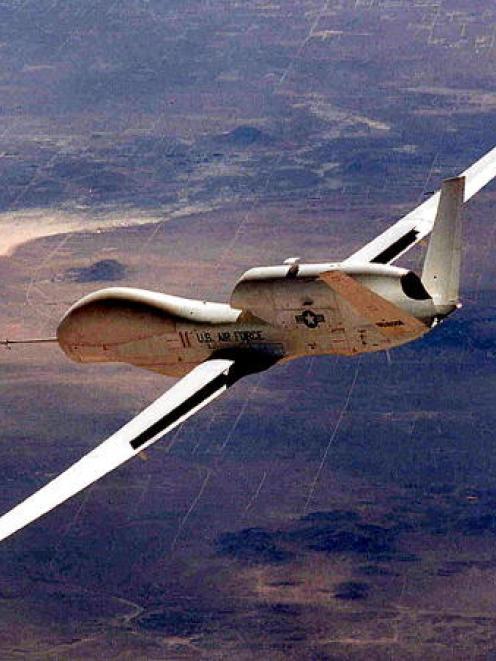
With a price tag of $250 million and a wingspan greater than a 737 airliner, Global Hawk surveillance aircraft are amongst the largest and most expensive unmanned aerial vehicles (UAVs).
The US has tried to keep their operations secret.
But Civil Aviation Authority documents released to the Nww Zealand Herald under the Official Information Act say the mega-drones have flown numerous times in New Zealand airspace.
"Most [UAV] activity is from military users who are well informed and usually conduct operations away from the commercial airspace corridors," reads an issue assessment paper from last year.
"There have already been a number of occasions when Global Hawks [35-40 metre wing span, 3 tonne payload] have traversed New Zealand's oceanic airspace transiting between Australia and the US."
Massey University senior lecturer Jim Veitch, of the Centre for Defence and Security Studies, said such surveillance flights had been linked with Afghanistan.
But flights could be related to other security issues in the region, including China's activities in the South China Sea.
Dr Veitch said much of the intelligence gathered by assets such as the drones would likely be shared between the so-called Five Eyes intelligence club - the US, the United Kingdom, Canada, Australia and New Zealand.
"Years ago it was concerns about the Soviet Union, and spotter planes looking for submarine movements ... but these days, it's really the Chinese."
Last year it was revealed that the US had operated secret spy missions out of South Australia with its long-range Global Hawk drones, possibly over Afghanistan and off the North Korean coast.
The drones reach altitudes of nearly 20,000m, can stay aloft for more than 30 hours and travel 20,400km in a single flight, surveying more than 100,000sq km of terrain.
The Australian missions began shortly after the September 11, 2001, terror attacks and continued until at least 2006. They were uncovered by local aviation history enthusiasts and reported on ABC television's Foreign Correspondent programme.
After Herald inquiries about the Global Hawk flights, a CAA spokesman said the authority knew of only one Global Hawk which had briefly overflown the upper reaches of the Auckland Oceanic Airspace.
New Zealand's sovereign airspace extends 12 nautical miles (22.2km) from the coast. The Auckland Oceanic Airspace extends beyond that and into the South Pacific Ocean, up to Tonga and Samoa.
Royal New Zealand Navy spokeswoman Lieutenant Commander Vicki Rendall said it was important to note that the Defence Force was consulted only when a foreign military or government aircraft wished to enter New Zealand's sovereign airspace.
A spokesman for Defence Minister Jonathan Coleman said he would not comment as there had been no involvement with the NZDF.
The only public visit to Australia by a Global Hawk was in April 2001, after it flew more than 13,200km from California to become the first UAV to be acknowledged publicly as having crossed the Pacific.
The NZDF operates its own Kahu drones in what Ms Rendall said was a "limited interim capability for military tasks". Another drone is used as part of targeting systems.












